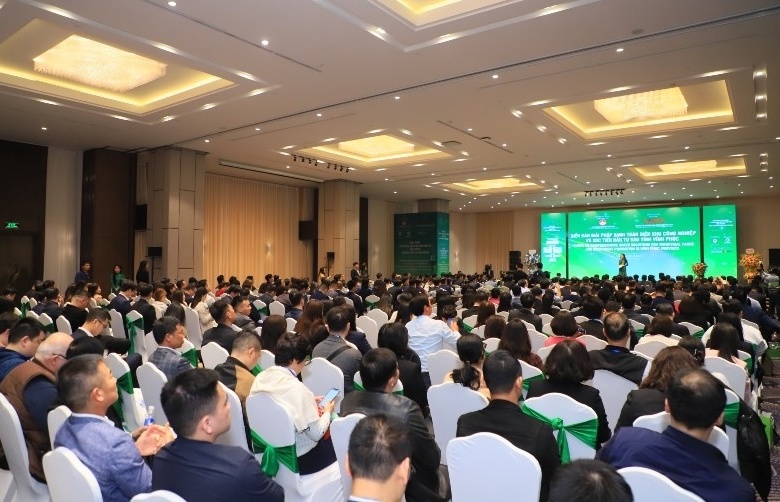The steps toward 2025’s logistics transformation
 |
| The new plan draws attention to the importance of logistics in Vietnam’s positioning as an international trade hub Photo: Le Toan |
Prime Minister Nguyen Xuan Phuc recently sanctioned the action plan to enhance the competitiveness and development of Vietnam’s logistics sector through 2025 in Decision No.200/QD-TTg, dated February 14, 2017.
The logistics sector is set to contribute between 8 and 10 per cent to Vietnam’s gross domestic product (GDP), with annual growth of 15-20 per cent by 2025. The plan also aims to make Vietnam one of the world’s 50 leading logistics services providers.
To facilitate the targets, the plan recommended improving policies, attracting more investment into infrastructure development, and cementing co-operation between local and foreign logistics firms. The country will develop leading logistics companies, which can be competitive in both domestic and international markets.
Under the plan, Vietnam will boost connectivity with neighbouring countries while developing regional and international hubs. The plan calls for building Type I logistic hubs in Hanoi and Ho Chi Minh City, and Type II logistic centres in Lang Son, Lao Cai, Haiphong, Danang, Quy Nhon, and Can Tho.
The initiatives taken by the Vietnamese government to strengthen the logistics industry and increase efficiency have been strongly supported by industry insiders.
Christoph Matthes, managing director of logistics firm DB Schenker in Vietnam, said, “We strongly support the plan as logistics has become more important than ever before, not only in Vietnam but for the global economy. It is now a true backbone of today’s globalisation.”
As well, Vietnamese consumers are increasingly demanding a faster and more reliable way of getting goods delivered. For many Vietnamese customers, logistics is no longer a matter of moving boxes from A to B, but creating a highly efficient and reliable supply chain enabling them to stay competitive in an ever-changing world.
At the same time, international trade is growing rapidly for Vietnam – and as a result there is a need to connect to other markets through excellent air freight, ocean freight, and road freight solutions. Some of the largest export markets for Vietnam include the ASEAN region and Europe, where Vietnam directly competes with other countries and logistics costs play a vital role.
Trade with European countries is expected to increase with the EU-Vietnam Free Trade Agreement (EVFTA) coming into force in 2018. Steps need to be taken to prepare for a smooth implementation of the agreement and to make sure businesses can truly benefit as soon as the treaty comes into force. The commitment of the government to strengthen the logistics sector is an important step towards making this possible.
According to Matthes, DB Schenker opened its doors in Vietnam more than 25 years ago and the company continues to invest in expanding its logistics business in the country. Recently the firm launched a new cross-border road service from Hanoi to Bangkok, made possible because of the improvement of the road transport network in ASEAN and the modernisation of customs processes.
“The new service demonstrates our commitment in looking for new ways of offering transportation and logistics solutions in Vietnam,” he said. “The ultimate goal is to connect markets, and excellent logistics will make this possible.”
Nestor Scherbey, general director of logistics firm CTRMS Vietnam, said the plan is critical to raising Vietnam’s national competitiveness, particularly in light of the most recent developments in global trade. As of now, logistics costs in Vietnam are extraordinarily high.
According to Logistics Insight Asia, logistics costs in Vietnam are among the world’s highest, at 25 per cent of GDP, which hinders the cost competitiveness of Vietnamese companies. Logistics costs in the US, Europe, and the rest of the world are about 9, 13, and 15 per cent, respectively.
“The efforts necessary to achieve the national action plan for logistics must be undertaken in co-ordination with diligent efforts by Vietnam to implement the commitments of the World Trade Organization Trade Facilitation Agreement (WTO TFA),” Scherbey said.
Many of the major commitments of the WTO TFA were contained in the Trans-Pacific Partnership (TPP) and EVFTA. Full implementation of trade facilitation by Vietnam would reduce the country’s international trade transaction costs by 20 per cent.
This means that implementing the WTO TFA fully would bring twice as much benefit to Vietnam that would be provided by TPP and all other free trade agreements, if all tariffs were to be scrapped.
“It is the combination of the benefits of trade facilitation with the benefit of reducing domestic logistics costs that will allow Vietnamese products to become fully competitive in global markets,” he said.
What the stars mean:
★ Poor ★ ★ Promising ★★★ Good ★★★★ Very good ★★★★★ Exceptional
Latest News
More News
- Georgia: the right place to visit and invest (December 18, 2024 | 16:15)
- Quang Ngai’s incentives will lure in industrial investment (December 17, 2024 | 17:00)
- Dong Thap excited to hail investors to industrial zones (December 17, 2024 | 15:00)
- Dong Thap pushes on with crane conservation efforts (December 17, 2024 | 12:00)
- Wholesale upgrades drive Tien Giang goals (December 17, 2024 | 11:00)
- Investing channels worth attention (December 17, 2024 | 09:08)
- Proper mindset vital for serious investors (December 16, 2024 | 16:30)
- Market signals point to new openings for investment (December 16, 2024 | 12:09)
- Drivers remain strong for consumer sector (December 14, 2024 | 16:00)
- Decoding the variables shaping investments in 2025 (December 13, 2024 | 10:53)













 Mobile Version
Mobile Version